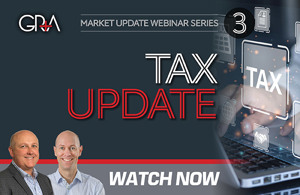
The shareholder’s current account (i.e. the net balance of funds introduced and withdrawn by the shareholder) is one of the most common things that our clients ask us about.
The most frequent questions that we receive are: How did this occur? What does the movement between this year and last year represent? Why does the company owe me money? Why do I owe money to the company?
When a business starts, it does not have its own funds, so naturally shareholders contribute money into the company. This becomes a liability from the company’s point of view. The opposite position occurs when the shareholder withdraws funds from the company. This becomes an asset from the company’s point of view.
The movements in the shareholder’s current account are what have been contributed or withdrawn during the year by the shareholder.
More than one shareholder
If there are two or more completely separate (unrelated) shareholders in a company, it is extremely important to treat their respective shareholder’s current accounts carefully, as this is the actual money that belongs to each shareholder. If this has not been recorded correctly, or a mistake is made, the financial consequences can be significant.
Shareholder’s account in credit
If a shareholder’s current account is in credit (i.e. the company owes money to the shareholder), it can be considered as a loan to the company. Provided that the company has sufficient cashflow, the shareholder can withdraw funds up to the balance of the account without any tax consequences.
Shareholder’s account overdrawn
Issues can occur if the shareholder’s current account is overdrawn. There is a requirement to charge interest on the overdrawn shareholder’s current account. Otherwise, it could be subject to fringe benefit tax (FBT) because the shareholders receive a benefit from the company by using the funds.
If you find yourself in this situation, or you have any other questions about your shareholder current account, please get in touch with your GRA Client Services Manager so we can provide the most appropriate solution, applicable to your individual circumstances. (If you are not a client of GRA, book a meeting to discuss how we can help you – the initial meeting is free of charge if you are new to our practice.)

Anna Loginova
Partner
Did you like this article? Subscribe to our newsletter to receive tips, updates and useful information to help you protect your assets and grow your net worth. We're expert accountants providing expert advice to clients in NZ and around the world.
Disclaimer: This article is intended to provide only a summary of the issues associated with the topics covered. It does not purport to be comprehensive nor to provide specific advice. No person should act in reliance on any statement contained within this article without first obtaining specific professional advice. If you require any further information or advice on any matter covered within this article, please contact the author.
Comments
Testimonials
GRA's services are top notch. I took their property course online over COVID, and then I went to them for a second opinion on some property tax advice I'd received that didn't sound quite right to me. They set me right and saved me from a massive IRD bill. After that I moved over to them full-time. They've given me ongoing sound tax and asset planning advice, and I greatly appreciate and value my annual review meeting with my accountant. I can't speak more highly of GRA in looking out for my best interests.
- Sarah P, June 2023
Gilligan Rowe and Associates is a chartered accounting firm specialising in property, asset planning, legal structures, taxation and compliance.
We help new, small and medium property investors become long-term successful investors through our education programmes and property portfolio planning advice. With our deep knowledge and experience, we have assisted hundreds of clients build wealth through property investment.
Learn More








































